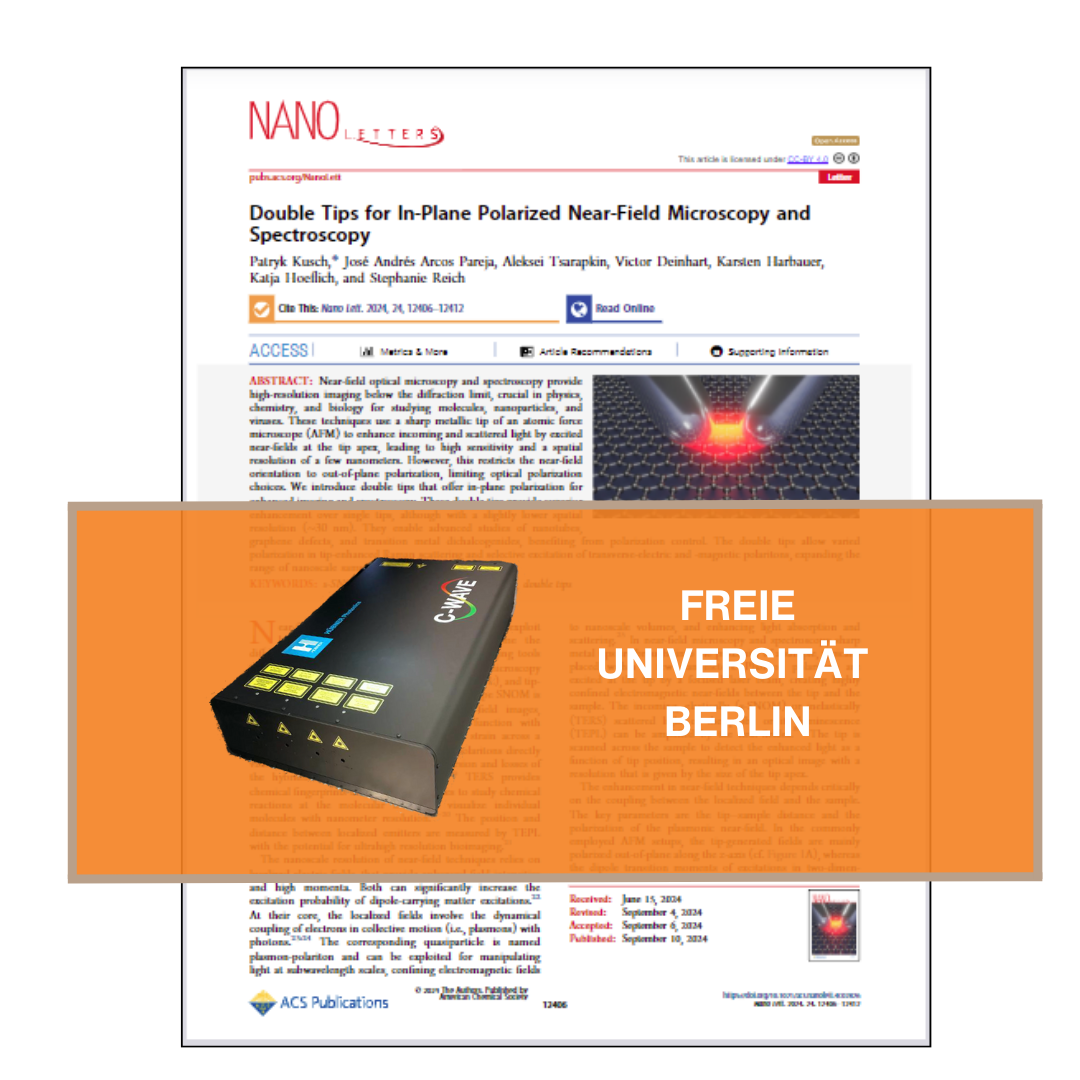New Study in Near-Field Microscopy using TERS
Researchers have made a significant advancement in the field of near-field optical microscopy and spectroscopy. The team, led by Patryk Kusch at the Freie Universität Berlin (Fachbereich Physik), has managed to show major improvements on the measurement contrast using double tips for in-plane polarized near-field microscopy, as detailed in their recent publication in Nano Letters.
Near-field optical microscopy and spectroscopy are crucial for high-resolution imaging below the diffraction limit, essential for studying molecules, nanoparticles, and viruses. Traditionally, a sharp metallic tip of an atomic force microscope (AFM) is used to enhance light, achieving high sensitivity and spatial resolution of a few nanometers. However, this method limits the optical polarization to out-of-plane orientation.
The researchers introduce a new approach using double tips that provide in-plane polarization, enhancing imaging and spectroscopy capabilities. For the near-field experiment the group combined s-SNOM – Scattering Scanning Near-Filed Optical Microscopy (a powerful imaging technique that works by using a sharp tip to scatter light very close to the sample surface, creating high-resolution images), and TERS – Tip-Enhanced Raman Scattering (which combines the high spatial resolution of scanning probe microscopy with the chemical sensitivity of Raman spectroscopy). As an excitation source, the group used our C-WAVE Tunable Laser in the range 450-650 nm and 900-1300 nm
The double tips tailored polarization properties provide superior tip enhancement compared to single tips, although with a slightly lower spatial resolution of approximately 30 nm. The new method provides great benefits for polarization control, allowing researchers to study materials more effectively, as they can choose the most suitable polarization for their experiments, leading to more accurate and detailed imaging and spectroscopy results. Additionally, the double tips also enable varied polarization in tip-enhanced Raman scattering and selective excitation of specific polaritons, broadening the range of nanoscale samples that can be examined.
The study represents a significant step forward in nanoscale imaging and spectroscopy, opening another degree of freedom for SNOM research. This can lead to new discoveries and advancements in multiple scientific and technological fields.
More resources
Looking for more in-depth information? Visit our Knowledge Bank page for detailed articles and insights on our products and technologies.


